Find more information in the General Comments section of the assessment
Find more information in the Rating Validity tab of the assessment
-
Adult Occupant
See More 91%
91% -
Child Occupant
See More 79%
79% -
Pedestrian
See More 50%
50% -
Safety Assist
See More 71%
71%
- Good
- Adequate
- Marginal
- Weak
- Poor
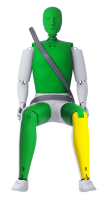 Passenger
Passenger
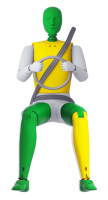 Driver
Driver
 Front Seat
Front Seat
 Car
Car
 Pole
Pole
- Good
- Adequate
- Marginal
- Weak
- Poor
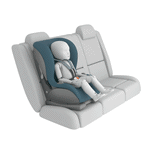

Passenger
outboard
center
Fitted to the vehicle as standard
Not fitted to the test vehicle but available as option
Not Available
Forward movement of the 3 year dummy, sat in a forward facing restraint, was not excessive. Both the 3 year dummy and the 18 month dummy were properly contained within the shells of their restraints in the side impact, minimising the risk of dangerous head contact. The passenger airbag can be disabled to allow a rearward facing child restraint to be used in that seating position. However, information provided to the driver regarding the status of the airbag is not sufficiently clear. Permanently attached labels on the sun visor clearly warn of the dangers of using a rearward facing child seat in that position.
- Good
- Adequate
- Marginal
- Weak
- Poor

Head Impact 12.0 Pts
Pelvis Impact 0.0 Pts
Leg Impact 6.0 Pts
In all of the areas likely to be struck by an adult's head, protection was poor and no points were awarded for this part of the assessment. Conversely, the area likely to be struck by small adults and children provided good protection and scored maximum points. The bumper provided good protection to pedestrians' legs. However, the protection offered to a pedestrians hip and pelvic area was poor.
- Good
- Adequate
- Marginal
- Weak
- Poor
| Performance | ||
| Vehicle Yaw Rate @ COS + 1.00 s | 6.306% | meets ECE requirements |
| Vehicle Yaw Rate @ COS + 1.75 s | 2.125% | meets ECE requirements |
| Lateral Displacement @ BOS + 1.07 s | 3.36 m | meets ECE requirements |
| Applies To | Front seats | ||
| Warning | Driver Seat | Front Passenger(s) | Rear Passenger(s) |
| Visual | |||
| Audible | |||
|
|||
Electronic stability control is standard and met Euro NCAP's requirements. Speed limitation devices are available only as an option and were not assessed by Euro NCAP. There is a seatbelt reminder system for the driver and passenger seats only.
- Specifications
- Safety Equipment
- Videos
- Rating Validity
Specifications
Tested Model Opel Astra GTC, 1.4l petrol 'Sport', LHD
Body Type - 3 door Coupe
Year Of Publication 2011
Kerb Weight 1437kg
VIN From Which Rating Applies - Applies to all Astra GTCs of the specification tested
Class Small Family Car
Safety Equipment
Note: Other equipment may be available on the vehicle but was not considered in the test year.
Fitted to the vehicle as standard
Fitted to the vehicle as option
Not fitted to the test vehicle but available as option
Not Available
Not Applicable
Videos
Rating Validity


Find more information in the General Comments section of the assessment
 Share
Share
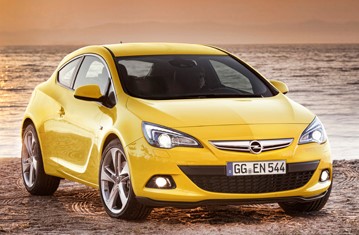
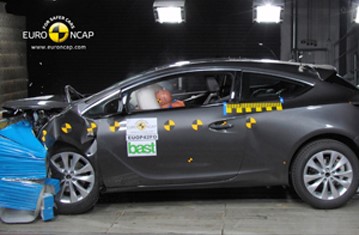
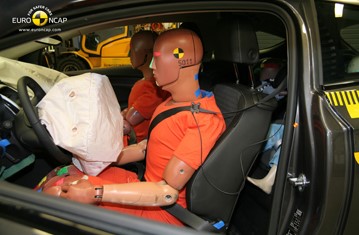




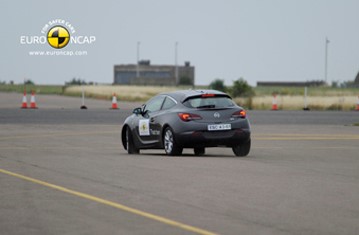




The passenger compartment remained stable in the frontal impact. Dummy readings indicated good protection of the knees and femurs for both the driver and front passenger dummies. Opel showed that a good level of protection would also be offered to occupants of different sizes and to those sat in different seating positions. In both the side and pole impact, dummy readings of rib compression indicated marginal protection of the chest area. However, the front seat and head restraints provided good protection against whiplash injuries in a rear-end collision.